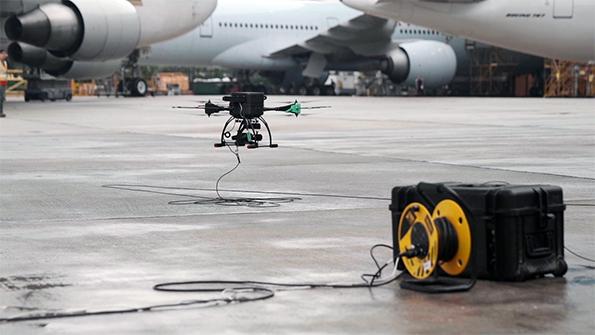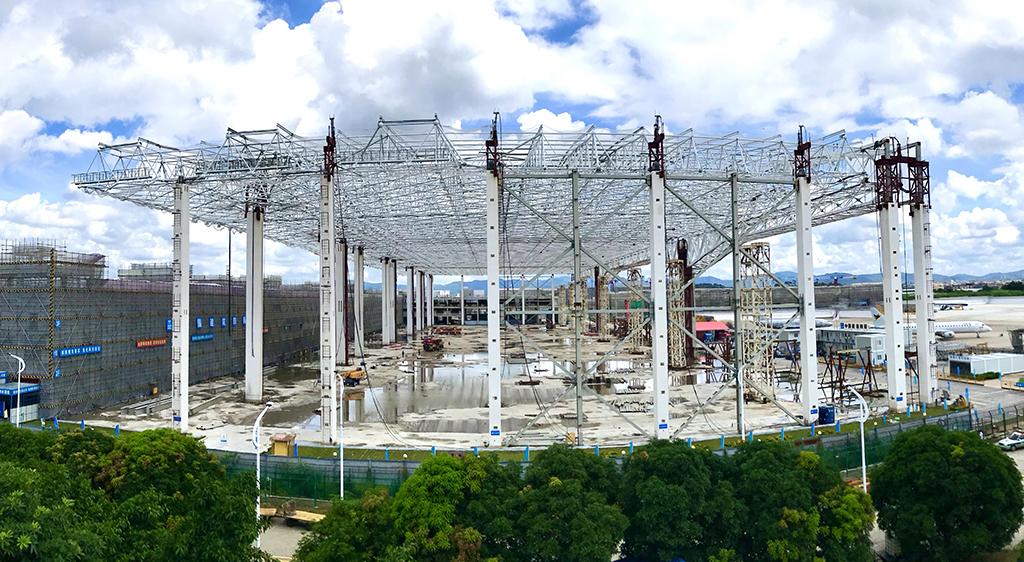
When the pandemic hit in early 2020, a natural assumption was that costly and often lengthy technology rollouts would be curtailed by companies looking to save costs, even in digitally progressive regions like the Asia-Pacific. MROs with the necessary resources and financial backing have opted to see out their preexisting commitments, while some have even looked to bring forward new digitally driven innovations. However, this is very much dependent on the makeup of the company.
“The ability to lean forward during this period is somewhat dependent on the state of the business pre-pandemic and the level of government support received during the crisis, so this is not completely regional-based,” says Mike Egan, vice president for commercial aviation at technology vendor IFS. “However, generally Asia-Pacific has been leading the charge, followed by North America and lagged by Europe.”
Egan says Asia-Pacific MRO providers now recognize that aging IT systems act as barriers to digital transformation. “While less exciting than developments such as big-data analytics, a major priority for these businesses is replacing the core MRO systems that form the foundation for this innovation, many of which are legacy MRO solutions built on generic enterprise resource planning systems that were implemented 15 to 20 years ago,” he says.
This has been especially true for airline maintenance divisions operating from aging software systems. Others, such as Singapore Airlines and its MRO affiliate, SIA Engineering (SIAEC), have the resources to introduce several digital initiatives. Despite a 55.4% year-on-year revenue hit owing to COVID-19, SIAEC plans to invest around S$40 million ($30.2 million) in digital initiatives over the next three years. Its digital transformation includes the introduction of its own Smart-MX software system, enabling digital access to line maintenance engineers for information and decision support.
Carriers operating on a smaller scale are looking at more measured ways of driving operational improvements. Derwin Sandoval, director of engineering and maintenance at Cambodian carrier Bassaka Air, says the carrier has chosen not to go paper-less owing to its small fleet of just two Airbus A320 aircraft. Instead, it has focused on its flight operations and creating an electronic flight bag (EFB) solution to digitize paper documents.
Digital Innovation in China
The fastest-moving digitalization efforts in the Asia-Pacific region have been in China. Norbert Marx, CEO of Gameco, believes the country has responded well to digital technology and has a leading position in terms of adoption and development. “This is because of its large-scale market, the higher tolerance of the society to digital risk, investment and the state’s supporting policies for information and technology management,” he says. However, the volume and willingness to adopt digital methods in China can itself result in challenges for MROs there.
Gameco has developed a series of such projects: rollout of a mobile route maintenance management system, electronic signature cards, shared toolbox, aircraft external scanning and defect identification, application of radio-frequency identification technology in materials and tool equipment management, and the use of augmented reality glasses and virtual reality technology in engine test training, among others. “At present, we are upgrading the maintenance management system to a fully integrated overall digitized system,” Marx adds.

Rather than slowing due to COVID-19, the opposite has occurred. Underpinning much of these investments is the move to a 5G internet network at all of Gameco’s hangars since 2019. This rollout will extend to its new 635,000-ft.2 hangar in Guangzhou, scheduled to open this year, and at new component and composite repair facilities earmarked to begin operation by 2022. “5G will provide the infrastructure to realize the full integration of telephone, mobile phone and other interactive platforms, further digitalization of personnel, tools, materials, equipment and to connect all elements of the production-management system in real time with each other,” Marx says.
Engine Maintenance
Engine MROs in the region are also finding ways to digitize their processes. MTU Maintenance has a digitalization 4.0 road map in place for its group of companies, one of which is engine repair specialist Maintenance Zhuhai. The business has looked to simplify its day-to-day operation by focusing on improving customer experience and communication, as well as increasing shop efficiency and simplifying administrative processes.
“In 2019, we built and tested an on-site services app for our customers. They can use this to place a request, track the status of their engine, access all necessary documents and give feedback,” says Jaap Beijer, president and CEO of MTU Maintenance Zhuhai. “We have also introduced automatically guided vehicles (robots) in our shop to transport smaller items in our internal logistics department. These vehicles travel along pre-programed routes and have built-in safety features to avoid collisions.”
In 2020, the company focused on improving the customer shop experience while seeking to drive its digitalization plans forward. “We ran an internal campaign throughout the year, inviting employees to submit suggestions for our digitalization road map,” Beijer says. More than 100 ideas were submitted, and MTU Maintenance Zhuhai is now focusing on 10 key areas, including creating a digital flowline. “This digital flowline will enable us to plan our shop visit progress and shop floor organization on the screen rather than physically on the shop floor,” he says, adding that it aims to go live by year-end. “Additionally, we plan to completely digitize our shop floor management and communication solutions, as well as some quality-related processes such as parts-tracking and data handling.”
Airframe MRO
Another regional player that has pioneered digital methods is ST Engineering. The company has developed its Smart MRO strategy since 2017 and has driven its work in-house across areas such as big-data analytics and robotics inspections, which it is rolling out to some of its facilities globally.
Lee Hui Fung, senior vice president and head of innovation and continuous improvement for commercial aerospace at ST Engineering, says there was no impact on its plans to invest in technology and innovation. “In fact, the pandemic has accelerated our efforts in this regard, especially when it comes to automation and data analytics, as we focus more on achieving cost efficiency, and doing more with less,” she explains. She pinpoints the work the company has done across its airframe MRO operation as an example of this.
“Our airframe MRO operations in Singapore have gone digital for at least 10 years now, and we are working on a more standardized digital platform across our facilities,” Fung says. “The objective of such a standardized platform is to allow for an even higher level of efficiency in the flow and collection of data. The platform will also serve to integrate operations from sales and marketing with our supply chain and maintenance oversight activities for a smoother workflow across different functions.”
Improvements have also been gained through ENVIS (Engines Visual Information Systems), which was implemented in 2018 to digitalize the engine MRO business. “More functions and advanced features have since been, or are being added, to facilitate our work processes,” Fung says. “These include the replacement of radio-frequency identification with facial-recognition technology to make our work more secure.”
Rise of Automation
Fung says a more visible result of its smart MRO initiatives can be seen in the implementation of robotics, which helps to improve work efficiency by automating the more labor-intensive tasks. “This is especially valuable in cases where there is a spike in activities, such as passenger-to-freighter conversion. . . . The introduction of automation, such as in the drilling process of the floor-grid structure during conversion, will help us to keep up with the production schedules through a more efficient deployment of manpower and better quality control.”
As maintenance becomes more automated, one key challenge will be adopting or developing the right solutions. “We are in a kind of technology and digitalization ‘wonderland,’ so one of the major challenges is to find the best technological solution possible for our needs among such a range of options and providers,” Beijer says. He adds that the human element will also play a role in developing digital initiatives.

